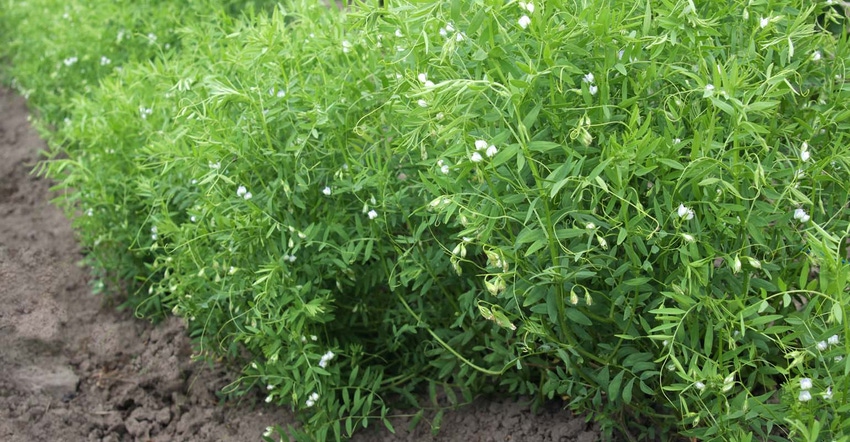
by Jen Skerritt
The little lentil and the humble pea -- staples for vegetarians all over the world -- are having a big impact on the declining profitability of some Canadian farmers and food makers.
Not only have lentil prices tumbled more than 30% in the past year, but the largest consumer, India, had bumper harvests and is trying to unload its surplus inventory. Exports of so-called pulse crops by Canada, the top grower and shipper, are down by about half. Regina, Saskatchewan-based AGT Food & Ingredients Inc., a big seller of pulses, has reported four straight quarters of losses and its shares are down 46% in 2017.
“It’s hard to get somebody willing to buy right now,” said Saskatchewan farmer Brad Blackwell, who seeded one third of his 8,000 acres with red lentils this year. “Prices are quite dismal.”
The outlook has gone from bad to worse, disrupting a business that was enjoying the highest prices ever as recently as early 2016. Since then, farmers have expanded production, creating a global glut. In Canada alone, the number of acres devoted to lentils jumped 62% from four years earlier while pea plantings climbed 23%, government data show.
Lentil shipments in the three months through October dropped to 88,200 metric tons, down 71% from the same period a year earlier, Canadian Grain Commission data show. Exports of dried peas, another major pulse crop that Canada producers, dropped 39% to 849,900 tons.
In India, where the legumes are cooked with curry spices, sauces or butter and eaten at most meals with rice and flat bread, demand for imported pulses is fading. Farms have rebounded from the weak monsoon rains that devastated crops back in 2014. The country also is importing more peas and lentils from Eastern Europe that are cheaper than Canadian supplies, said Marlene Boersch, managing partner of Mercantile Consulting Venture in Winnipeg, Manitoba.
Record Crop
India harvested 23 million tons of pulses in the 2016-2017 crop year that ended in July, up 28% from a year earlier, said Colin Topham, president of the Canadian Special Crops Association. The government on Nov. 16 scrapped export curbs, and a ministerial council is reviewing the trade policies on pulses. The country has imposed import taxes on peas, which Topham says means prices are poised to drop further.
In the week of Nov. 9, Canadian yellow peas had their biggest weekly decline on record, falling 25% to $6 a bushel, according to Brian Clancey, president and senior market analyst at Vancouver-based Stat Communications Ltd. Grower bids for red lentils slid 19% during the same week, while bids for large green lentils tumbled 18%, he said.
“We’re working through our first global pulse oversupply in many years,” Topham said by telephone from Winnipeg, Manitoba.
Complicating the outlook are new Indian penalties on Canadian shipments, ending an earlier waiver that exempted them from having to fumigate dried peas and lentils.
Farmers in Saskatchewan are being offered about 19 Canadian cents a pound for red lentils, down from more than 30 Canadian cents a year earlier, Blackwell said. As a result, the return for growers on pulses are no longer as attractive as grains or oilseeds, Clancey said.
The dropoff in demand is putting the squeeze on companies that make their living selling pulses to consumers, including AGT Food & Ingredients. Big buyers including India and Turkey have cut back, and policy changes in India have created a “sense of general malaise” in the market, said Chief Executive Officer Murad Al-Katib.
“This recovery to more normalized conditions is now expected to come more slowly than previously estimated,” Al-Katib said on an earnings call with analysts on Nov. 6. Al-Katib did not respond to a Bloomberg request for an interview.
In the meantime, some farmers are relying on other crops, including wheat and canola, to pay the bills. Blackwell, the Saskatchewan grower, says he will hold onto his lentils for awhile to see if prices recover, but probably will plant less of it next year because returns are so lousy.
“I’ll wait til the new year and see where the market goes,” Blackwell said. “Demand worldwide is down.”
To contact the reporter on this story: Jen Skerritt in Winnipeg at [email protected]
To contact the editors responsible for this story: Simon Casey at [email protected]
Steve Stroth, Millie Munshi
© 2017 Bloomberg L.P
About the Author(s)
You May Also Like




